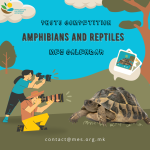
Macedonia is threatened by various pollutants. Air pollution is one of the highest in Europe, a large amount of waste is not recycled, water quality is deteriorating, there is excessive deforestation, biodiversity is threatened with extinction, and climate change affects food production. In such a growing ecological crisis, public institutions, businesses, civil organizations, media, and the academic sector should increasingly take responsibility for their actions and communicate about the environment. In this way, awareness and understanding of complex environmental issues will be raised, strengthening the role of citizens and organizations in preserving the environment.
This was stated at the conference “How to communicate about the environment in the growing ecological crisis: practical experiences and new perspectives,” organized by the Institute for Communication Studies today.
In his opening address, Dejan Andonov, program coordinator at ICS, stated that effective communication can help advocate for policies, change people’s behavior, resolve conflicts, and enact environmental laws.
“Communication about the environment encompasses many things – informing about floods or plastic waste in local riverbeds, civic engagement and activism against new power plants or mining, involving the public in environmental decision-making, taking responsibility for environmental protection by companies, political rhetoric, and communicating scientific knowledge. So let’s talk more about the environment! Because citizen involvement in managing and protecting natural resources largely depends on their level of awareness of environmental issues,” Andonov said.
Steve Depo, president of the International Association for Environmental Communication, says that on one hand, there is rhetoric that supports excessive resource use and profit and is skeptical of science and sustainability, while on the other hand, there are those who speak of climate emergencies and existential threats with emotions of anger and fear. Much less prevalent is rhetoric about the environment based on scientific interpretation and meaning.
“Environmental communication emerges as an academic discipline for crisis resolution and action. It has always been perceived as a response to urgent problems, so everyone studying communication has also been involved in advocating issues related to the environment in their local community or beyond. The other determinant that encompasses communication is caring for the environment, environmental justice, but also designing growth and nurturing resilience to change,” said Prof. Steve Depo of the International Association for Environmental Communication.
It is important for activists, public officials, scientists, journalists, and professional communicators to know how to properly address, explore, explain, and disseminate information about environmental issues to the general public. In this regard, Dime Melovski from the Macedonian Ecological Society shared the experience of affirming the protection of the Balkan lynx in the public, but also how natural symbols can be used for national branding.
“The longest-term program for strengthening the Balkan lynx began 18 years ago. The data we obtained by capturing lynxes help us develop conservation plans to protect them, and the next stage will focus on strengthening the lynx’s genetics,” Melovski said.
He said that currently there are between 35-40 adult Balkan lynx individuals, but much more needs to be done for their protection.
Source: iks.edu.mk



